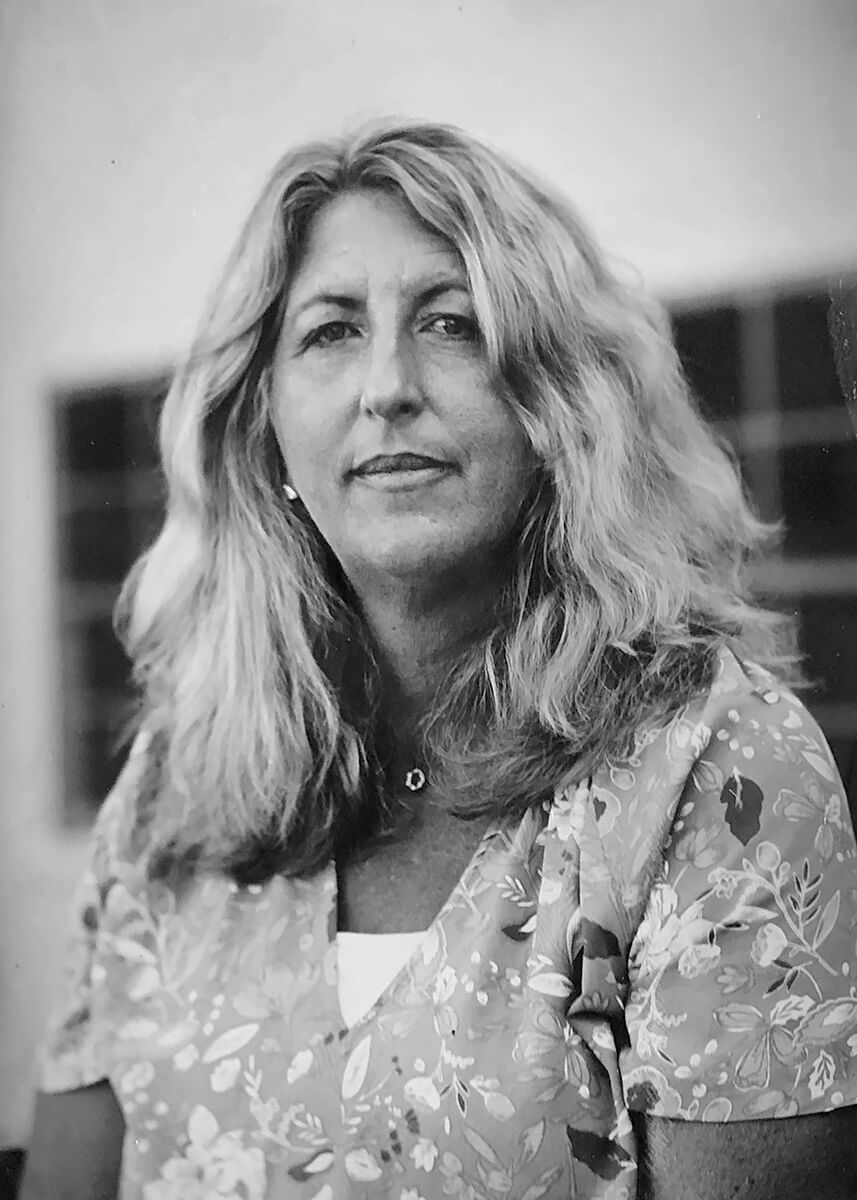Annette LeMay Burke (b. 1964) is a photographic artist and Northern California native who lives in the heart of Silicon Valley. Numerous family road trips throughout California and the West honed her eye for observing the landscape. By eight years old, she had her own Instamatic camera and graduated to a Minolta X-700 as a teen. While earning a BA in Earth Science from the University of California at Berkeley, she took her first darkroom class. After a career in high-tech, and studying design, Annette has now merged her interests. Her artistic practice focuses on how we interact with the natural world and the landscapes constructed by the artifacts of technology.
Annette's first book,
Fauxliage (Daylight Books, Spring 2021), documents the proliferation of disguised cell phone towers in the American West and how new technologies are modifying our landscapes with idiosyncratic results. Her work has been exhibited at institutions such as Center for Photographic Arts, Colorado Photographic Arts Center, Griffin Museum of Photography, Texas Photographic Society, The Center for Fine Art Photography, and Photographic Center Northwest. In 2017, she was a finalist for Photolucida's Critical Mass.
Fauxliage - Disguised Cell Phone Towers of the American West
Fauxliage documents the proliferation of disguised cell phone towers in the American West. For me, the fake foliage of the trees draws more attention than camouflage. The often-farcical tower disguises belie the equipment's covert ability to collect all the phone calls and digital information passing through them, to be bought and sold by advertisers and stored by the NSA.
From the very start, cell towers were considered eyesores. Plastic leaves were attached in an attempt to hide the visual pollution. Over time, the disguises have evolved from primitive palms and evergreens into more elaborate costumes. The towers now masquerade as flagpoles, crosses, water towers, and cacti. Over time, as our demand for five bars of connectivity has increased, the charade has remained.
I was initially drawn to the towers' whimsical appearances. The more I photographed, the more disconcerted I felt that technology was clandestinely modifying our environment. I explore how this manufactured nature is imposing a contrived aesthetic in our neighborhoods. My photographs expose the towers' idiosyncratic disguises, highlight the variety of forms, and show how ubiquitous they are in our daily lives. Their appearance is now an inescapable part of the iconic western road trip and the eight states I visited for this project.
As the fifth generation (5G) of cellular technology continues to roll out, the cell tower terrain will be changing. 5G utilizes smaller equipment that is easier to hide - think fat streetlight poles. Perhaps elaborately disguised 'fauxliage' towers will begin disappearing and be considered an anachronism of the early 21st century. The decorated towers could join drive-up photo kiosks, phone booths, news stands, and drive-in movie theaters as architectural relics of the past.
More about Fauxliage
More about Memory Building
